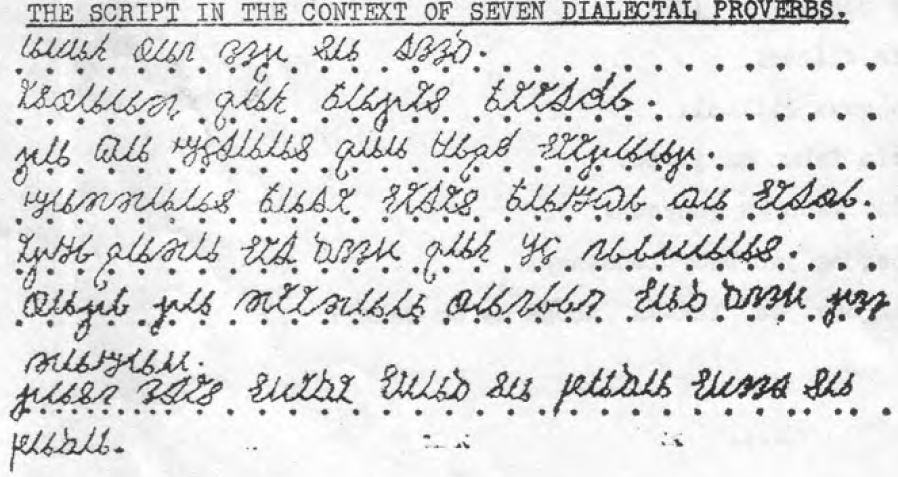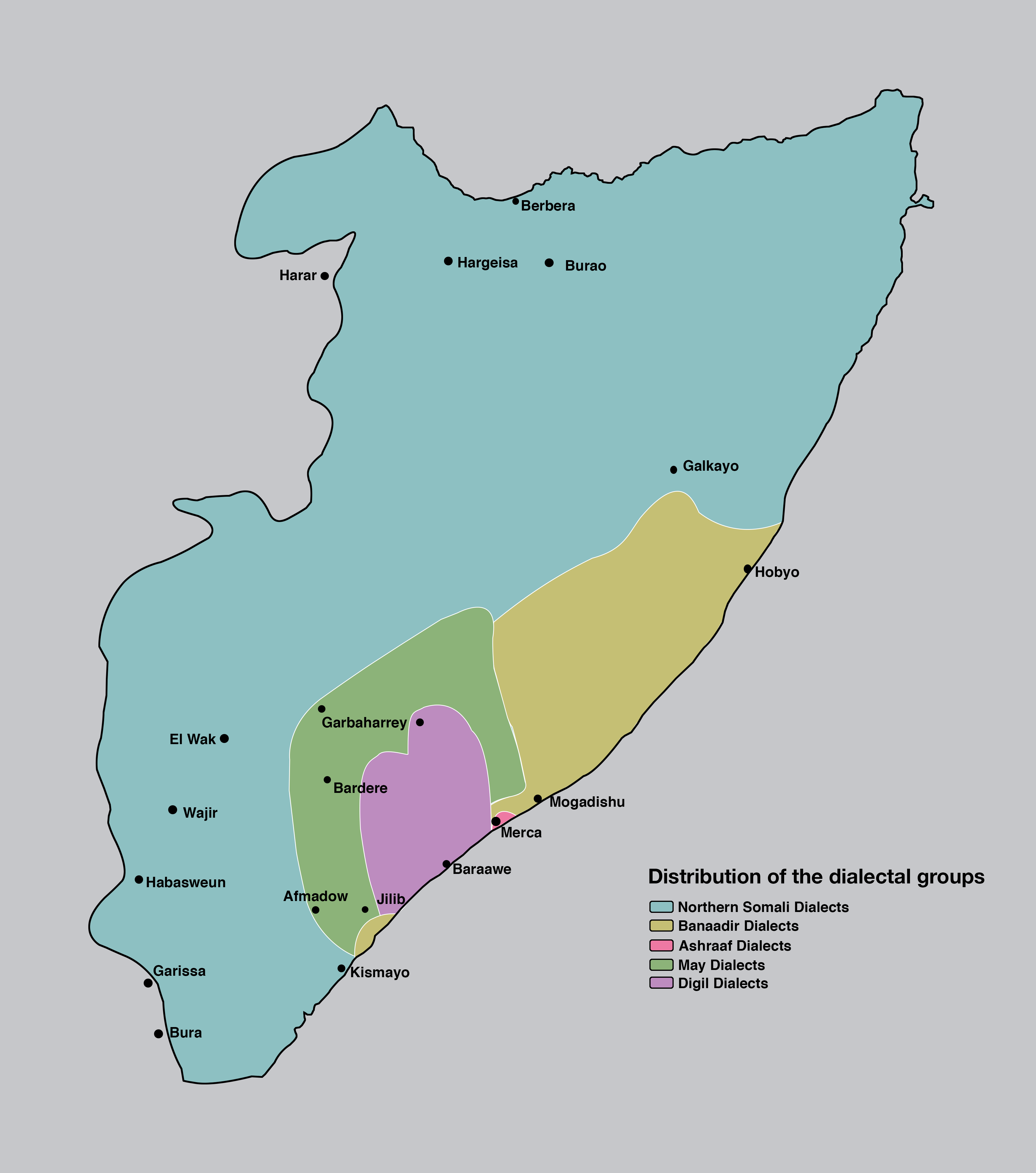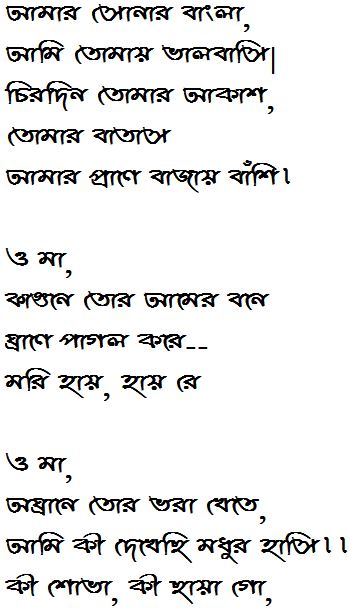|
Kaddare Alphabet
The Kaddare alphabet is a writing script created to transcribe Somali, a Cushitic language in the Afroasiatic language family. History The orthography was invented in 1952 by a Sufi Sheikh, named Hussein Sheikh Ahmed Kaddare. A phonetically robust writing system, the technical commissions that appraised the Kaddare script concurred that it was a very accurate orthography for transcribing Somali. Form The Kaddare script uses both upper and lower case letters, with the lower case represented in cursive. Many characters are transcribed without having to lift the pen. Several of Kaddare's letters are similar to those in the Osmanya script, while others bear a resemblance to Brahmi. As there are no dedicated characters for long vowels, a vowel is made long by simply writing it twice. See also *Somali orthography *Borama *Osmanya The Osmanya script ( so, Farta Cismaanya ๐๐๐๐๐ ๐๐๐๐๐๐๐๐), also known as Far Soomaali (๐๐๐ ๐๐๐ ... [...More Info...] [...Related Items...] OR: [Wikipedia] [Google] [Baidu] |
Somali Language
Somali (Latin script: ; Wadaad writing, Wadaad: ; Osmanya: ๐๐ ๐๐๐๐๐๐ ) is an Afroasiatic languages, Afroasiatic language belonging to the Cushitic languages, Cushitic branch. It is spoken as a mother tongue by Somalis in Greater Somalia and the Somali diaspora. Somali is an official language in Somalia and Ethiopia, and a national language in Djibouti as well as in northeastern Kenya. The Somali language is written officially with the Somali Latin alphabet, Latin alphabet although the Arabic alphabet and several Somali scripts like Osmanya script, Osmanya, Kaddare script, Kaddare and the Gadabuursi Somali Script, Borama script are informally used.Lewis, I.M. (1958)The Gadabuursi Somali Script ''Bulletin of the School of Oriental and African Studies'', University of London, Vol. 21, pp. 134โ156. Classification Somali is classified within the Cushitic branch of the Afroasiatic family, specifically, Lowland East Cushitic languages, Lowland East Cushitic in ... [...More Info...] [...Related Items...] OR: [Wikipedia] [Google] [Baidu] |
Alphabet
An alphabet is a standardized set of basic written graphemes (called letters) that represent the phonemes of certain spoken languages. Not all writing systems represent language in this way; in a syllabary, each character represents a syllable, and logographic systems use characters to represent words, morphemes, or other semantic units. The first fully phonemic script, the Proto-Sinaitic script, later known as the Phoenician alphabet, is considered to be the first alphabet and is the ancestor of most modern alphabets, including Arabic, Cyrillic, Greek, Hebrew, Latin, and possibly Brahmic. It was created by Semitic-speaking workers and slaves in the Sinai Peninsula (as the Proto-Sinaitic script), by selecting a small number of hieroglyphs commonly seen in their Egyptian surroundings to describe the sounds, as opposed to the semantic values of the Canaanite languages. However, Peter T. Daniels distinguishes an abugida, a set of graphemes that represent consonantal base ... [...More Info...] [...Related Items...] OR: [Wikipedia] [Google] [Baidu] |
Writing System
A writing system is a method of visually representing verbal communication, based on a script and a set of rules regulating its use. While both writing and speech are useful in conveying messages, writing differs in also being a reliable form of information storage and transfer. Writing systems require shared understanding between writers and readers of the meaning behind the sets of characters that make up a script. Writing is usually recorded onto a durable medium, such as paper or electronic storage, although non-durable methods may also be used, such as writing on a computer display, on a blackboard, in sand, or by skywriting. Reading a text can be accomplished purely in the mind as an internal process, or expressed orally. Writing systems can be placed into broad categories such as alphabets, syllabaries, or logographies, although any particular system may have attributes of more than one category. In the alphabetic category, a standard set of letters represent speech ... [...More Info...] [...Related Items...] OR: [Wikipedia] [Google] [Baidu] |
Cushitic Language
The Cushitic languages are a branch of the Afroasiatic language family. They are spoken primarily in the Horn of Africa, with minorities speaking Cushitic languages to the north in Egypt and the Sudan, and to the south in Kenya and Tanzania. As of 2012, the Cushitic languages with over one million speakers were Oromo, Somali, Beja, Afar, Hadiyya, Kambaata, Saho, and Sidama. Official status The Cushitic languages with the greatest number of total speakers are Oromo (37 million), Somali (22 million), Beja (3.2 million), Sidamo (3 million), and Afar (2 million). Oromo serves as one of the official working languages of Ethiopia and is also the working language of several of the states within the Ethiopian federal system including Oromia, Harari and Dire Dawa regional states and of the Oromia Zone in the Amhara Region. Somali is the first of two official languages of Somalia and three official languages of the self declared republic of Somaliland. It also serves as a la ... [...More Info...] [...Related Items...] OR: [Wikipedia] [Google] [Baidu] |
Afroasiatic Language
The Afroasiatic languages (or Afro-Asiatic), also known as Hamito-Semitic, or Semito-Hamitic, and sometimes also as Afrasian, Erythraean or Lisramic, are a language family of about 300 languages that are spoken predominantly in the geographic subregions of Western Asia, North Africa, the Horn of Africa, and parts of the Sahara/Sahel. With the exception of its Semitic branch, all branches of the Afroasiatic family are exclusively native to the African continent. Afroasiatic languages have over 500 million native speakers, which is the fourth-largest number of native speakers of any language family (after Indo-European, Sino-Tibetan, and NigerโCongo). The phylum has six branches: Berber, Chadic, Cushitic, Egyptian, Semitic, and Omotic. The most widely spoken modern Afroasiatic language or dialect continuum by far is Arabic, a ''de facto'' group of distinct language varieties within the Semitic branch. The languages that evolved from Proto-Arabic have around 313 million nati ... [...More Info...] [...Related Items...] OR: [Wikipedia] [Google] [Baidu] |
Hussein Sheikh Ahmed Kaddare
Hussein Sheikh Ahmed Kaddare ( so, Xuseen Sheekh Axmed Kaddare, ar, ุญุณูู ุงูุดูุฎ ุฃุญู ุฏ ูุงุฏุงุฑู; March 2 1934 โ February 2015) was a Somali inventor, linguist, and researcher in Somali traditions and folklore. Kaddare contributed his linguistic expertise in Somalia's Ministry of information. Kaddare is widely known for creating the Kaddare script used in transcribing the Somali language. Biography Kaddare was born in the town of Adale in the Middle Shebelle region of Somalia in 1934. In 1953, he created the Kaddare script, an orthography named after him that was used to transcribe the Somali language He died on February 1, 2015 in Mogadishu after battling an unspecified illness. See also * Kaddare script * Osmanya script * Borama script * Wadaad's writing * Osman Yusuf Kenadid * Sheikh Abdurahman Sheikh Nuur Sheikh Abdurahman Sh. Nur ( so, Sheekh Cabdiraxmaan Sheekh Nuur, ar, ุดูุฎ ุนุจุฏ ุงูุฑุญู ู ุดูุฎ ููุฑ) was a Somali Sheikh (religious leader), ... [...More Info...] [...Related Items...] OR: [Wikipedia] [Google] [Baidu] |
Cursive Writing Of Kaddare
Cursive (also known as script, among other names) is any style of penmanship in which characters are written joined in a flowing manner, generally for the purpose of making writing faster, in contrast to block letters. It varies in functionality and modern-day usage across languages and regions; being used both publicly in artistic and formal documents as well as in private communication. Formal cursive is generally joined, but casual cursive is a combination of joins and pen lifts. The writing style can be further divided as "looped", " italic" or "connected". The cursive method is used with many alphabets due to infrequent pen lifting and beliefs that it increases writing speed. Despite this belief, more elaborate or ornamental styles of writing can be slower to reproduce. In some alphabets, many or all letters in a word are connected, sometimes making a word one single complex stroke. A study of gradeschool children in 2013 discovered that the speed of their cursive writing ... [...More Info...] [...Related Items...] OR: [Wikipedia] [Google] [Baidu] |
Cursive
Cursive (also known as script, among other names) is any style of penmanship in which characters are written joined in a flowing manner, generally for the purpose of making writing faster, in contrast to block letters. It varies in functionality and modern-day usage across languages and regions; being used both publicly in artistic and formal documents as well as in private communication. Formal cursive is generally joined, but casual cursive is a combination of joins and pen lifts. The writing style can be further divided as "looped", "italic script, italic" or "connected". The cursive method is used with many alphabets due to infrequent pen lifting and beliefs that it increases writing speed. Despite this belief, more elaborate or ornamental styles of writing can be slower to reproduce. In some alphabets, many or all letters in a word are connected, sometimes making a word one single complex stroke. A study of gradeschool children in 2013 discovered that the speed of their cu ... [...More Info...] [...Related Items...] OR: [Wikipedia] [Google] [Baidu] |
Osmanya Script
The Osmanya script ( so, Farta Cismaanya ๐๐๐๐๐ ๐๐๐๐๐๐๐๐), also known as Far Soomaali (๐๐๐ ๐๐๐๐๐๐, "Somali writing") and, in Arabic, as ''al-kitฤbah al-สฟuthmฤnฤซyah'' (ุงููุชุงุจุฉ ุงูุนุซู ุงููุฉ; "Osman writing"), is a writing script created to transcribe the Somali language. It was invented between 1920 and 1922 by Osman Yusuf Kenadid, the son of Sultan Yusuf Ali Kenadid and brother of Sultan Ali Yusuf Kenadid of the Sultanate of Hobyo. History While Osmanya gained reasonably wide acceptance in Somalia and quickly produced a considerable body of literature, it proved difficult to spread among the population mainly due to stiff competition from the long-established Arabic script as well as the emerging Somali Latin alphabet developed by a number of leading scholars of Somali, including Musa Haji Ismail Galal, B. W. Andrzejewski and Shire Jama Ahmed. As nationalist sentiments grew and since the Somali l ... [...More Info...] [...Related Items...] OR: [Wikipedia] [Google] [Baidu] |
Brahmi Script
Brahmi (; ; ISO: ''Brฤhmฤซ'') is a writing system of ancient South Asia. "Until the late nineteenth century, the script of the Aลokan (non-Kharosthi) inscriptions and its immediate derivatives was referred to by various names such as 'lath' or 'Lat', 'Southern Aลokan', 'Indian Pali', 'Mauryan', and so on. The application to it of the name Brahmi 'sc. lipi'' which stands at the head of the Buddhist and Jaina script lists, was first suggested by T rriende Lacouperie, who noted that in the Chinese Buddhist encyclopedia ''Fa yiian chu lin'' the scripts whose names corresponded to the Brahmi and Kharosthi of the ''Lalitavistara'' are described as written from left to right and from right to left, respectively. He therefore suggested that the name Brahmi should refer to the left-to-right 'Indo-Pali' script of the Aลokan pillar inscriptions, and Kharosthi to the right-to-left 'Bactro-Pali' script of the rock inscriptions from the northwest." that appeared as a fully developed scrip ... [...More Info...] [...Related Items...] OR: [Wikipedia] [Google] [Baidu] |
Vowel
A vowel is a syllabic speech sound pronounced without any stricture in the vocal tract. Vowels are one of the two principal classes of speech sounds, the other being the consonant. Vowels vary in quality, in loudness and also in quantity (length). They are usually voiced and are closely involved in prosodic variation such as tone, intonation and stress. The word ''vowel'' comes from the Latin word , meaning "vocal" (i.e. relating to the voice). In English, the word ''vowel'' is commonly used to refer both to vowel sounds and to the written symbols that represent them (a, e, i, o, u, and sometimes y). Definition There are two complementary definitions of vowel, one phonetic and the other phonological. *In the phonetic definition, a vowel is a sound, such as the English "ah" or "oh" , produced with an open vocal tract; it is median (the air escapes along the middle of the tongue), oral (at least some of the airflow must escape through the mouth), frictionless and continuant ... [...More Info...] [...Related Items...] OR: [Wikipedia] [Google] [Baidu] |
Somali Orthography
A number of writing systems have been used to transcribe the Somali language. Of these, the Somali Latin alphabet is the most widely used. It has been the official writing script in Somalia since the Supreme Revolutionary Council (Somalia), Supreme Revolutionary Council formally introduced it in October 1972, and was disseminated through a nationwide Somali Rural Literacy Campaign, rural literacy campaign. Prior to the twentieth century, the Arabic script was used for writing Somali. An extensive literary and administrative corpus exists in Arabic script. It was the main script historically used by the various Somali sultans to keep records. Writing systems developed locally in the twentieth century include the Osmanya alphabet, Osmanya, Borama alphabet, Borama and Kaddare alphabet, Kaddare scripts. Latin script The Somali Latin script, or Somali Latin alphabet, was developed by a number of leading scholars of Somali language, Somali, including Musa Haji Ismail Galal, B. W. And ... [...More Info...] [...Related Items...] OR: [Wikipedia] [Google] [Baidu] |










